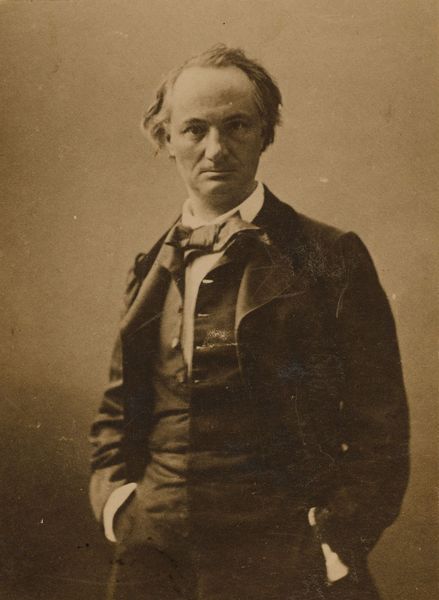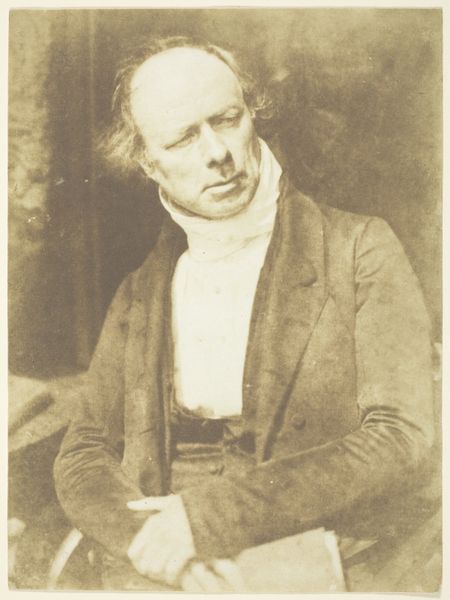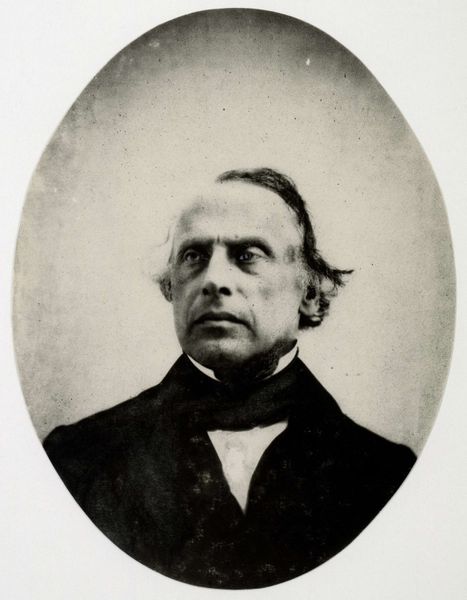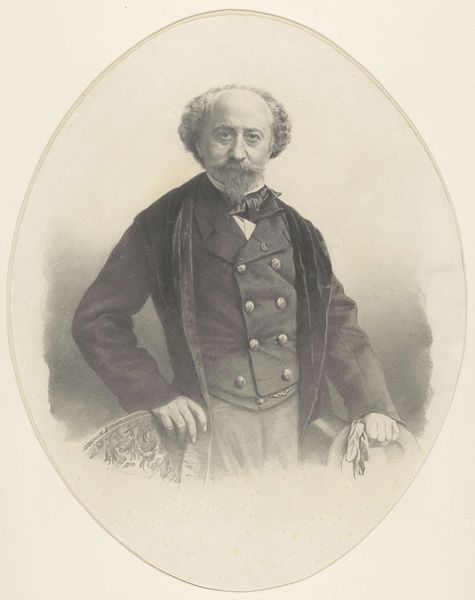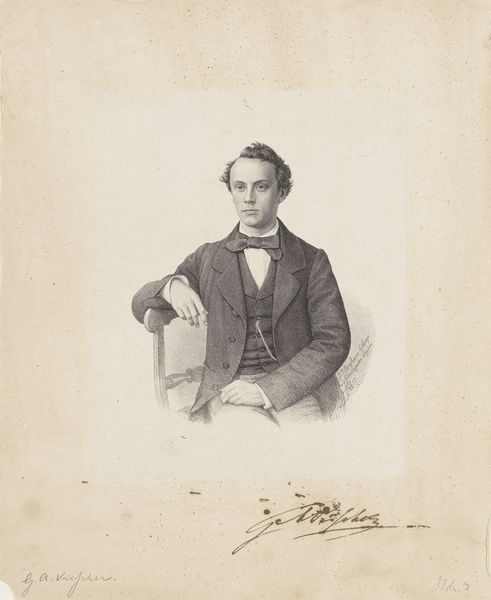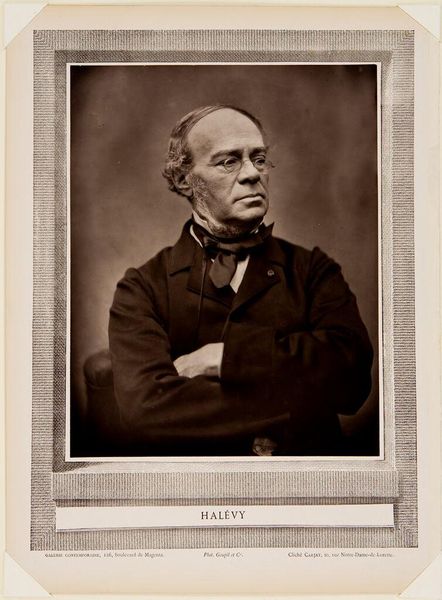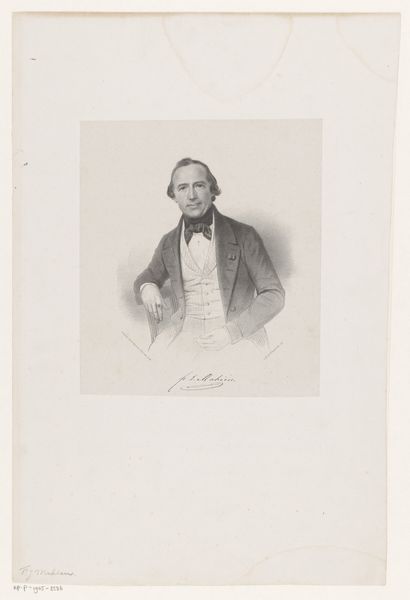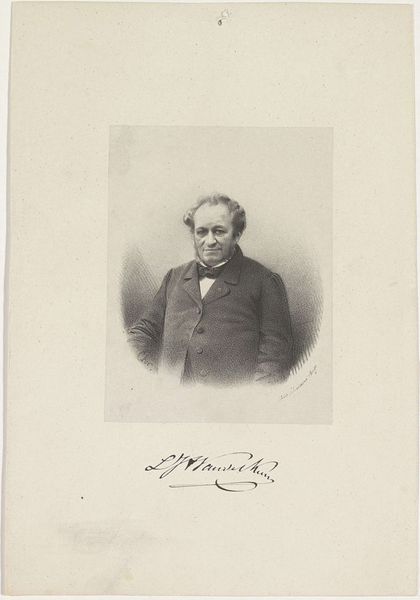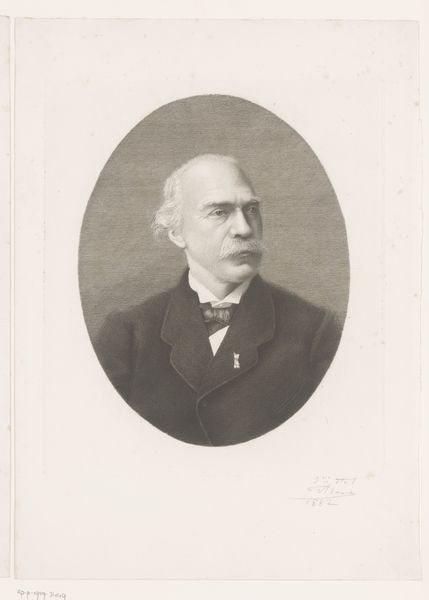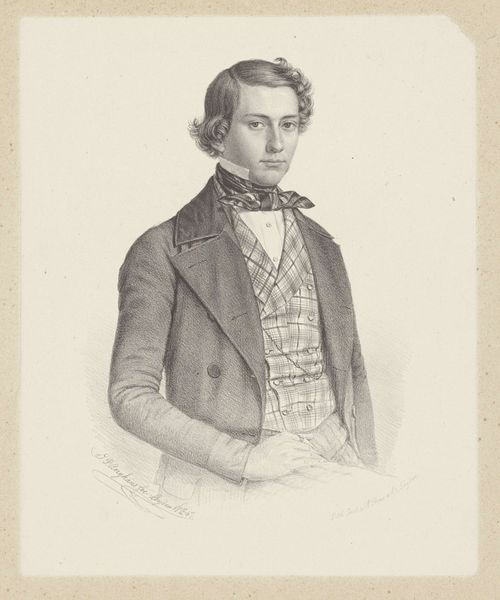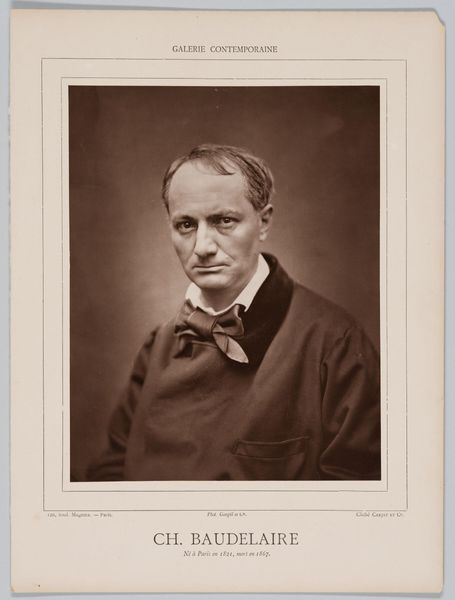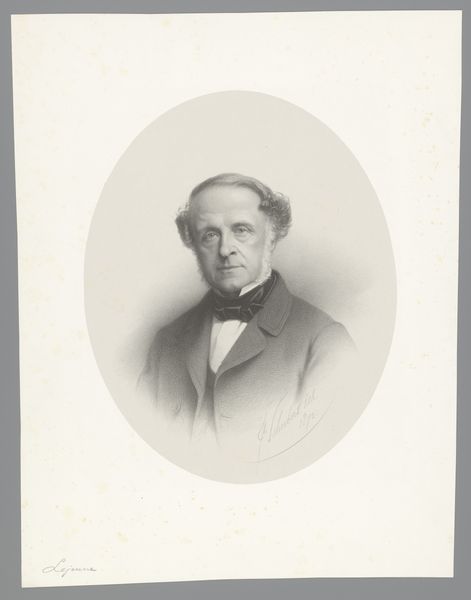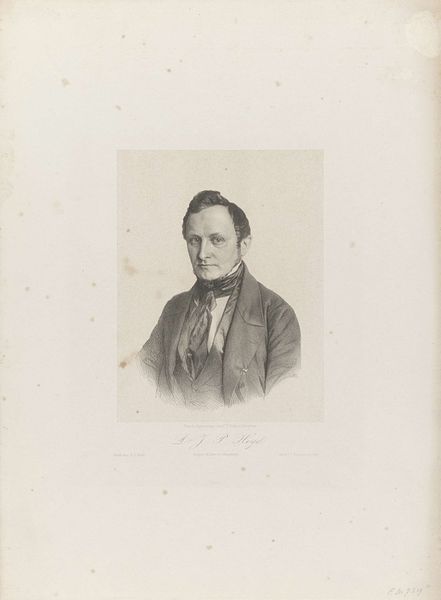
Copyright: Public domain
Curator: Here we see Félix Nadar's portrait of Charles Baudelaire, created in 1862. This daguerreotype offers a fascinating glimpse into the life of the celebrated French poet. Editor: My initial impression is one of quiet intensity. The oval framing seems to isolate him, focusing attention on his somewhat weary, but piercing gaze. It’s a stark presentation. Curator: It's interesting to consider this portrait within the burgeoning culture of celebrity and the democratizing power of photography in mid-19th century Paris. Nadar was at the epicenter of this, photographing many prominent figures. Editor: And Baudelaire himself had a very complex relationship with modernity, didn't he? Torn between embracing the new and critiquing its alienating effects, something you really sense when observing him. I mean, he seems simultaneously present and detached here. Curator: Precisely. Nadar’s studio was a gathering place for intellectuals and artists. His portraits played a pivotal role in shaping public perception. Look at the subtle way he has been styled: he looks every bit the sophisticated man of letters. The clothing and expression align perfectly to signal to the viewer this subject's intellectual gravitas. Editor: But, as photography developed into its early art form, one needs to think about how men dominated this new art field; it certainly lacked diversity, if we consider modern understandings. We may not think of it in Baudelaire’s historical context, but a question lingers in the background about who got to create and own imagery at the time. This photograph becomes yet another component to broader narratives of power, influence, and class. Curator: Indeed. Nadar’s work and the art world he cultivated existed within a specific social and political landscape. And to view such pictures is also to interrogate what this says of us, still looking today. Editor: It makes one wonder what Baudelaire himself would have thought of our deconstruction of his image all these years later. Food for thought. Curator: Agreed. The intersections are endlessly revealing. Thank you. Editor: My pleasure.
Comments
No comments
Be the first to comment and join the conversation on the ultimate creative platform.
